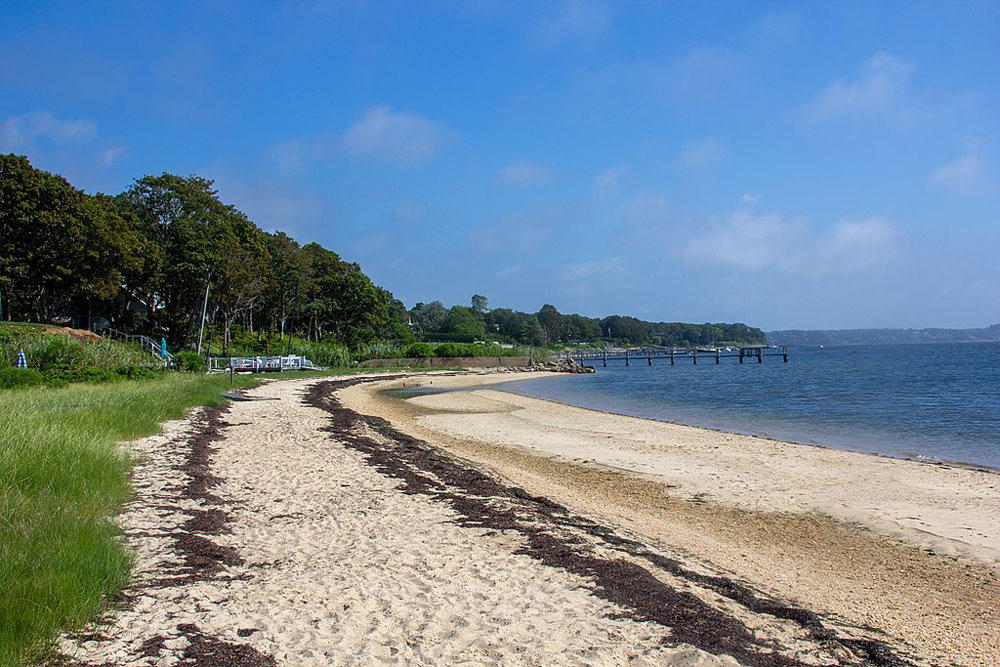
March 5, 2020, New York Times
As Martin Levine wrote last week, the Army Corps of Engineers has had to draw a line in the disappearing sand, moving some communities back from rising waters. Such an act is heart-wrenching for most, but it’s especially hard on indigenous peoples, who have so often been made to leave their land.
The Shinnecock Nation on the southeastern fork of New York’s Long Island has been reduced over the centuries to 1.5 square miles on the shore of a bay with little outlet to the ocean tides that are just on the other side of a barrier beach. Their land is constantly threatened by rising waters.
It is a relentless fight, moving dredged sand and placing sea and beach grasses, oyster shells, and large boulders in the path of the Atlantic Ocean. Shavonne Smith, director of the Shinnecock’s environmental department, is hoping to increase the oyster reef, which is intended to dissipate the force of the waves on the shore.
“We have an inherent responsibility to protect the homeland,” Smith says. “It’s not the type of thing where you can work against nature. You work with it.”
The Shinnecock project uses what experts in climate change adaption call “nature-based solutions” to mitigate the damage from the next storm. The wind and water use the grasses, rocks, and shells to sculpt the sand in desired directions, creating rising dunes. In almost four years, the Shinnecock have restored 3,250 feet of beach.
No one can predict how well this will all work, or for how long. Dorothy Peteet, a paleoclimatologist at New York’s Lamont-Doherty Earth Observatory at Columbia University, says, “It all depends on how fast the sea comes in, basically.”
Sign up for our free newsletters
Subscribe to NPQ's newsletters to have our top stories delivered directly to your inbox.
By signing up, you agree to our privacy policy and terms of use, and to receive messages from NPQ and our partners.
The Shinnecock, along with the Unkechaug nation a few miles away, suffered structural and shoreline damage from Superstorm Sandy in 2012. The area continued to flood from subsequent storms. Chris Pickerell, marine program director of the Cornell Cooperative Extension program, observes, “The extent and duration of flooding on the reservation showed what unabated sea level rise will look like in the future,” he said. “Sea level rise, combined with storms like Sandy, alter these natural rhythms and can result in catastrophic damage.” In New York state, from 1880 through 2015, the wetlands that are protected by barrier islands have eroded at the rate of about 20 inches annually.
The Shinnecock Nation has committed to do what they can and prepared a report that honors its values, including to “conserve, manage, and utilize…tribal lands, natural and cultural resources in a sustainably appropriate manner while balancing our economic growth and community needs.” The report notes that sea level rise is estimated to be between 2.1 and 4.4 feet by the end of the 21st century. “Something that was just slowly happening over time has picked up speed,” Smith says.
Viola Cause, natural resources manager at the Shinnecock environment department, points out the trees behind the dunes—sassafras, oak, elderberry—that stand over the ancient graves.
“We’ve been able to push back the water some, slow the water down, allow the plants and things to do what they need to do to revive themselves,” Cause says. “Just trying to use the natural things that were given to us.”
This is what we have left. So, then what? We would like to just have it still be preserved here for our future, our future generations. The beach. The land. The clean water.
—Marian Conway













